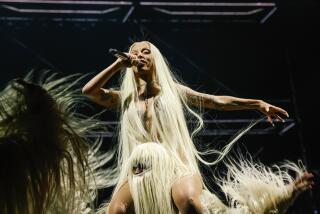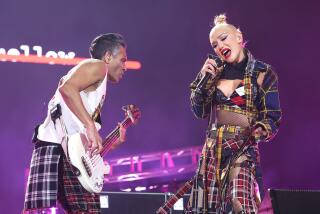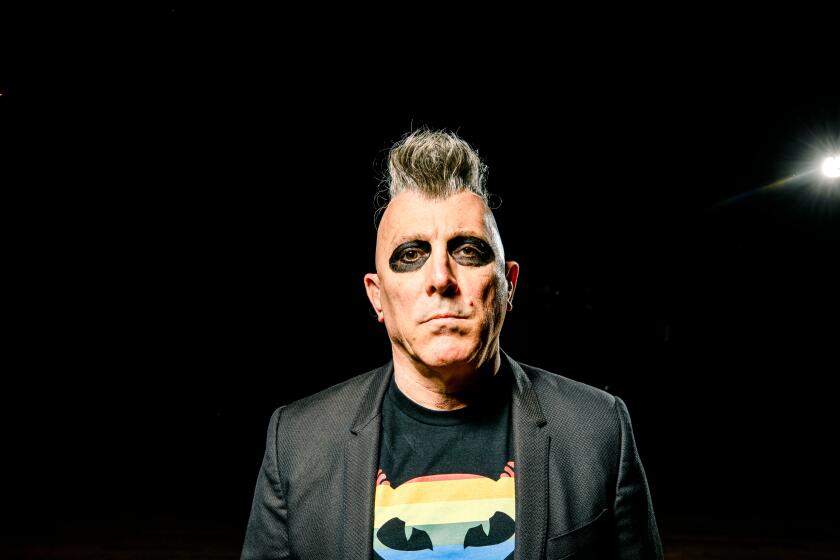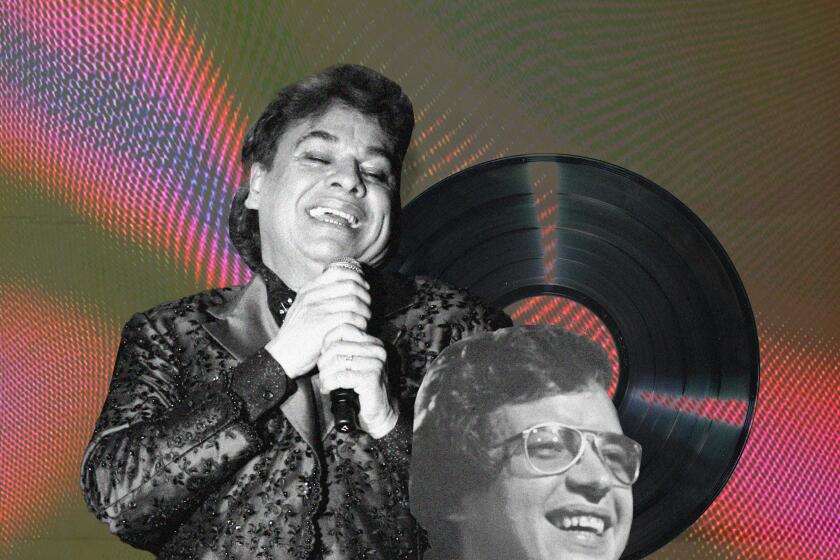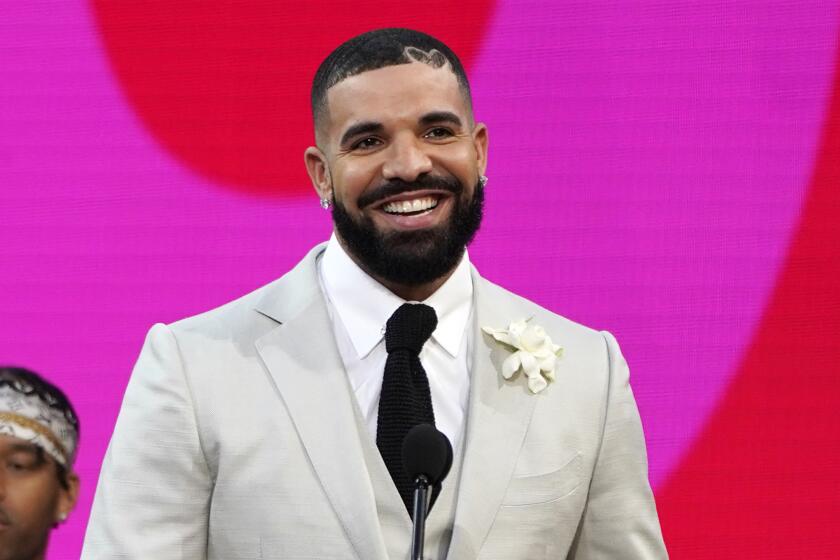Coachella magic
The most dramatic moment of this weekend’s Coachella festival will surely be when the four members of Rage Against the Machine step on stage together for the first time in seven years, but even that reunion will be hard pressed to match the drama of the politically charged band’s initial appearance there.
Rage’s tenacious set on the closing night of the inaugural festival in 1999 tops my list of Coachella’s memorable moments because the very future of the event hung in the balance.
That first Coachella chapter came just weeks after the trauma of Woodstock 99, a festival in upstate New York so marred by violence that civic authorities and rock fans around the country wondered if massive outdoor concerts were still possible in these hardened times. Even a trace of the lawlessness of Woodstock 99 would have ruled out future Coachellas.
To discourage rowdiness, the festival promoters at Goldenvoice were careful to book quality artists they felt would appeal chiefly to fans who were truly interested in music, not hell-raising. Rage was a superb band that fit the alternative aims of the festival, but it played with such alarming emotion and force that its presence made many who planned to attend Coachella nervous. By the time Rage finished its spectacular performance, however, Coachella’s future was secure. It was, in every way, the anti-Woodstock 99.
Here’s my best-of-Coachella list:
Rage Against the Machine, 1999. Tension reached a peak near the end of Rage’s set as fans in front of the stage moved to the music with alarming force. The band’s Zack de la Rocha screamed the closing lines of “Guerrilla Radio,” a song about striking back at oppression: “It has to start somewhere / It has to start sometime / What better place than here? / What better time than now?”
With emotions running so high in the audience, the fear was a repeat of the rampaging at Woodstock 99, where, among other things, hundreds of youths set bonfires, tore down at least two 50-foot light towers and attacked vendor trucks. Observers later blamed the rioting in large part on resentment of festival conditions, including overflowing toilets, lack of potable water and high-priced food. At Coachella, the promoters stressed fan comfort, which meant extra toilets, plenty of reasonably priced food and keeping the audience far below the capacity of the grounds to avoid overcrowding.
The key was that the Coachella fans didn’t see the event as a target of a song like “Guerrilla Radio.” Instead, they saw Coachella as something worth preserving: a haven of music, celebration and even social bonding. Thanks to both great performances such as Rage’s and a warm, uplifting spirit, Coachella earned that all-essential element: fan trust. Indeed, the weekend represented a rebirth of the festival concept across the country.
Beck, 1999. This gifted singer-songwriter was another headliner at the opening Coachella festival, and, like Rage, he previewed songs from an upcoming album. In Beck’s case, the music from “Midnite Vultures” was a bold step into a funk-driven R&B territory closer to Prince’s “Let’s Go Crazy” period than Beck’s earlier folk-shaded leanings. The slender auteur even wore a fringed flamboyant shirt and went through lots of Prince-inspired dance steps. It was a moment of sheer exhilaration for the 20,000 fans.
Beck also contributed to another special moment in 2004, one that again exemplified the informal spirit of Coachella. Just days before the show, Beck called Goldenvoice’s Paul Tollett and asked if he could join the lineup, not on the main stage but in one of the smaller tents. He had been in the studio for months, and he wanted to “shake off some of the studio dust by playing before people.” Beck was so relaxed he invited five fans on stage to play tambourine on a good-natured, folk-blues treatment of an old Kinks song. It was fun and disarming.
White Stripes, 2003. American rock ‘n’ roll was seriously in need of passionate new blood early in the new millennium, and the duo of singer-guitarist Jack White and drummer Meg White seemed the one most capable of supplying it. They offered a captivating blend of spectacular sonic textures, superb songwriting and daring instincts. As a fan, I loved that the Stripes had generated enough momentum to land one of the key evening spots on the main stage, but I worried about whether they were up to such a challenge. They had never played an L.A. venue larger than the 900-capacity El Rey, and they’d be facing some 30,000 fans at Coachella. No problem. The set was exhilarating, demonstrating that the Stripes could reach a wide audience without compromising their artful and deeply personal music.
Arcade Fire, 2005. Here’s another case of a great band making a triumphant leap. This young, Montreal-based group was playing clubs in town just months before stepping onto one of Coachella’s main stages. The songs about loss and resilience on their brilliant “Funeral” album took on added vitality on stage because the band performed with such zest.
Nine Inch Nails, 2005. Coachella has hosted many comebacks but none as thrilling as this one. In the early and mid-’90s, NIN leader Trent Reznor’s songs of alienation and self-loathing hit the rock mainstream with an anger and aggression that had rarely been seen. For a while after his “The Downward Spiral” album in 1994, Reznor seemed the likely successor to Kurt Cobain as the voice of a rock generation. But he went through an emotional, drug-driven spiral of his own that left his next album, 1999’s “The Fragile,” so dark and impenetrable that it all but ended his career. Indeed, he didn’t have another album until 2005’s “With Teeth.”
On stage at Coachella, Reznor was more compelling than ever. In one of the new songs, “The Line Begins to Blur,” he shared the confusion of his addiction: “There are things I would never do / There are fears I cannot believe have come true.” It was a courageous, life-affirming hour.
More to Read
The biggest entertainment stories
Get our big stories about Hollywood, film, television, music, arts, culture and more right in your inbox as soon as they publish.
You may occasionally receive promotional content from the Los Angeles Times.
